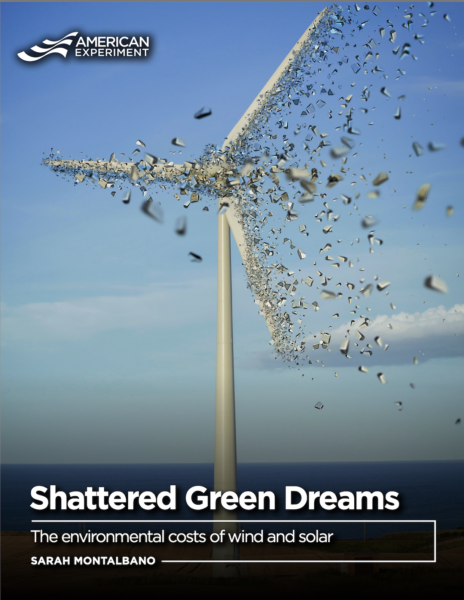Green energy is a disaster in several ways: it is inherently unreliable and ridiculously expensive. Some people naively assume, however, that wind and solar energy make up for these liabilities by being good for the environment. They couldn’t be more wrong.
The basic problem with wind turbines and solar panels (plus hypothetical batteries) is that they are extremely low-intensity. Do they work? Intermittently, yes. But compared with conventional energy sources, they produce a very small amount of energy on a per-unit of input basis. Thus, they require both enormous amounts of land and vast quantities of raw materials.
Thus, to supply America’s electricity with wind turbines would require a land area twice the size of California. But that isn’t all. Because they are so low-intensity, wind, solar and batteries require enormous amounts of raw materials. To actually transition to a “green” economy (which will never happen) would require the greatest mining, manufacturing, transportation and construction effort since the Industrial Revolution. And mining, manufacturing, transportation and construction all have significant environmental impacts.
Earlier today, American Experiment published a new report titled “Shattered Green Dreams,” by Sarah Montalbano. It contains all the facts you need to know about the baleful environmental effects of green energy. You can read it here.
For those who care about the environment, the most environmentally benign source of energy is nuclear, followed by hydropower, natural gas, coal, and, in more or less a tie for last place, wind and solar.

















